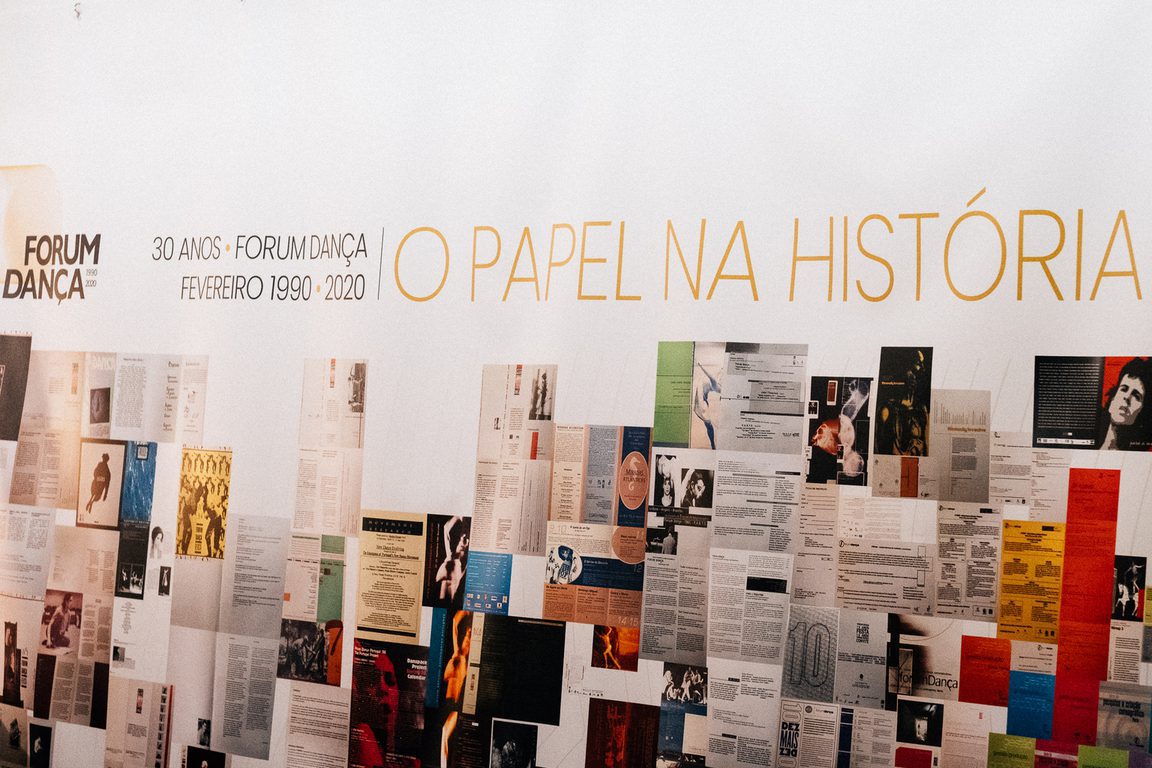Written by Ezequiel Santos
The Documentation Centre emerged with the foundation of Forum Dança (FD), in 1990, to support and systematize Contemporary Dance in Portugal. Through the vision of its founders – people of philosophy, choreography and movement analysis – a library section was created in English and French (books, magazines, studies), as well as video (national and international performance and rehearsal recordings, documentaries), and News and Media (catalogues, dance criticism). The aim was to support our students from various artistic and technical courses, local artists, the general public (via temporary loans), and our international partners and visitors who were interested in programming Portuguese dance. It has been consolidated through the acquisition of volumes, loans from private collections, or from the artists themselves who have visited us over three decades and left a record of their work (shows, publications).
At present, from the users’ point of view, we are more sought after by local people (students from 4 continents, researchers) for information specialising in dance or older records from the archive. We interact mainly with choreographers/companies and teachers, in a face to face relationship, and not so much with institutions or other national archives. In the 1990s, still marked by VHS records and absent of Internet platforms, international interaction was more common because local viewing was the only way for agents to get to know Portuguese dance.
Dance is an allographic art, i.e., it cannot be self-documented through its production/exhibition. It lives in time and is expressed in living bodies, so the choreographic archive must consider the character of ephemerality and performativity: we try, for each work, to have several temporal records of the process, or more than one presentation – accompanied by promotional material – in order to transmit the idea of a living work of art. Scope is also important: we include several genres in dance as a theatre art form, respecting the multiplicity of languages, looking for authenticity as a keyword. Since we are not a dance company, we invest in the aspects of registration and dating of the work, only, not investigating other themes of the archive (e.g., notation, techniques, reenactment requirements). These, and other topics, are reflected upon in theoretical seminars and workshops by invited artists and scholars, producing primary sources that can be researched by anyone interested.
The documentation follows a systematization into dozens of theoretical categories, as is done in the resource centres of the faculties of dance, and covers topics such as: i.e., anatomy, performance studies, modern dance, philosophy and aesthetics, theatre, visual arts. Choreographic archives are organized by countries, genres, and by authors (in the case of rehearsals and informal showings). Currently, we want to increase the uploading of documents on platforms (classes, seminars, informal showings), moving from the warehouse to the cloud, diversifying the audiences. An example are the AMHD lectures: aminhahistoriadadanca.com
There is still a sense of precariousness in the way dance is looked upon by its peers in academia, as if it were an entertainment art without choreographic thought. In our involvement in PREMIERE, the challenge, considering the less informed general public, is to approach the art of dance by integrating the historical, artistic, social and logical contexts of the work. In general, it is necessary to undo the idea that dance is, solely, an activity performed by athletic bodies, and that choreography has to follow a narrative and be associated to music. In this regard, the FD archive is being used, in the bibliographic and catalogue component, to search for information that will be indexed to the works. In the selection component, we seek to locate those pieces that are representative of current European heritage, and locating media with adequate technical quality.
Luckly, with technological tools new interfaces are possible, which allow varied information (historical, artistic, technical, philosophical) to be presented and linked like a menu, and this is certainly more attractive for users. At the same time, information can be created using specificities (language, graphics, text) that are motivating for audiences of different generations.
Finally, we see participation in this project also as a form of internal learning and updating of methods, since the search for information has increased our need to expand the number of countries and choreographers represented, on the one hand, and, on the other, to codify the immense audiovisual material relating to classes and informal showcases that is still in storage.
ES/FD
© Photo by Vitorino Coragem

